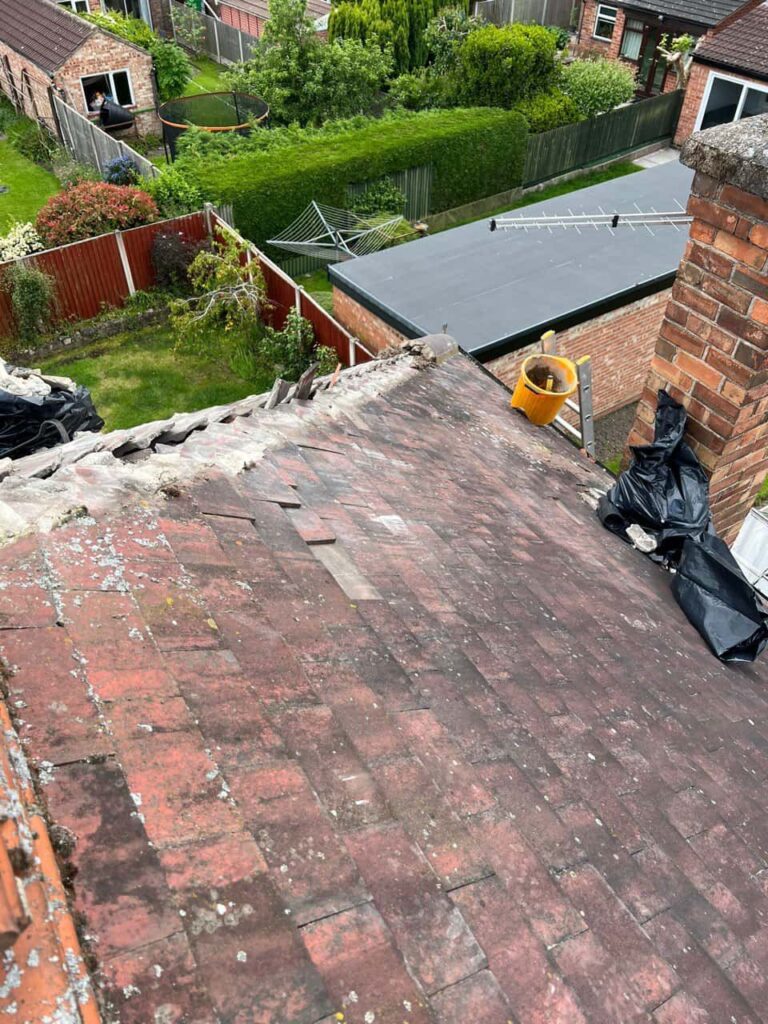When it comes to replacing or repairing a roof, many homeowners in Lutterworth and across Leicestershire often ask the same question: can I reuse my existing roof tiles? It’s a fair question—after all, if the tiles look fine to the naked eye, it might seem like a good way to save materials and reduce waste. But what do professional roofers really recommend when it comes to reusing old roof tiles?
Let’s take a deeper look into the practicalities, pros, and pitfalls of tile reuse—and what it means for your home’s protection, appearance, and long-term performance.
The Case for Reusing Roof Tiles
In certain situations, reusing roof tiles can be a viable option. For example, if the existing tiles are of good quality, show minimal wear, and have been well maintained, they may still have years of life left in them.
This is especially true with tiles made from natural slate or high-grade clay, which can last upwards of 100 years if undisturbed. These materials are highly durable and weather-resistant, making them more suitable for reuse than cheaper alternatives.
Benefits of Reusing Roof Tiles
Reusing tiles offers a few notable advantages:
- Environmental sustainability – Reduces waste sent to landfill and lowers the demand for new manufacturing.
- Visual continuity – Maintains the aged look and charm of period properties or extensions.
- Material match – Helps avoid inconsistencies in colour or style when trying to match existing roofing.
That said, the benefits only apply if the tiles are structurally sound, and that’s where the real assessment comes into play.
When Roof Tile Reuse Becomes a Risk
Although it sounds economical on the surface, reusing roof tiles is not always advisable. Even the best tiles degrade over time due to UV exposure, frost cycles, moisture absorption, and general wear.
Hidden Weaknesses Are Common
A tile might look intact from the ground, but up close, it could show:
- Hairline cracks or stress fractures
- Porosity (water absorption leading to moss or lichen growth)
- Warping or deformation
- Worn interlocking edges
These small imperfections can quickly become large issues once the roof is exposed to wind, rain, and temperature changes again.
Compatibility with New Roofing Systems
Modern roofing systems often include breathable membranes, updated battens, and insulation upgrades. Older tiles might not fit seamlessly into these systems, especially if their dimensions have slightly shifted due to age or manufacturing standards from decades ago.
Incompatibility can lead to inefficient waterproofing, poor ventilation, or a roof that simply doesn’t meet today’s standards.
What Roofers in Lutterworth Usually Recommend
At Lutterworth Roofing Repairs, we evaluate tile reuse on a case-by-case basis. It’s not just about the age of the tile—it’s about its condition, how it was laid originally, the structural state of the roof beneath, and the client’s goals.
A Professional Tile Assessment Is Crucial
Before deciding to reuse tiles, a roofer will typically check for:
- Cracks, chips, or spalling
- Water saturation or signs of frost damage
- Discolouration that may indicate wear or weakness
- Secure and consistent sizing for refitting
Only tiles that pass these checks should be considered for reuse.
Practical Scenarios Where Reuse Makes Sense
Partial Roof Repairs
If a small section of the roof is being repaired—say, after a storm—reusing matching tiles from other parts of the roof or stored spares may maintain visual harmony.
Listed or Conservation Properties
In listed buildings, planning authorities may require that original roofing materials be reused to preserve heritage appearance. In such cases, reusing sound tiles isn’t just an option—it might be a requirement.
When to Choose New Tiles Instead
Despite good intentions, new roof tiles are often the smarter choice—especially when:
- The majority of tiles show signs of wear
- The existing roof structure is being replaced or heavily altered
- Modern energy efficiency standards are being introduced
- A visual refresh is desired
New tiles bring enhanced weatherproofing, uniform aesthetics, and longer warranties, helping ensure peace of mind for decades.
What About Mixing Old and New Tiles?
Some roofers may blend new tiles with reusable ones. This works well visually on hidden parts of the roof or for small repairs. However, you should be cautious—it requires an experienced roofing team to balance looks, fit, and function. Poor blending can lead to noticeable mismatches and even weak points in the roof.
Conclusion
Reusing roof tiles can seem like a clever move, but it’s not without risks. While older tiles—especially those made from slate or clay—may retain value, many will have unseen damage or simply won’t perform to modern standards.
At Lutterworth Roofing Repairs, we always aim to strike the balance between value, appearance, and longevity. If tile reuse is possible and safe, we’ll tell you. If it’s better to start fresh, we’ll explain why—and ensure your roof is future-proof, weather-ready, and built to last.
Before you commit to either option, make sure you speak with a trusted local roofer who understands both the materials and the local environment. The roof is your home’s first line of defence—don’t compromise when it matters most.
Call us on: 01455 242 599
Click here to find out more about Lutterworth Roofing Repairs
Click here to complete our contact form and see how we can help with your roofing needs.

